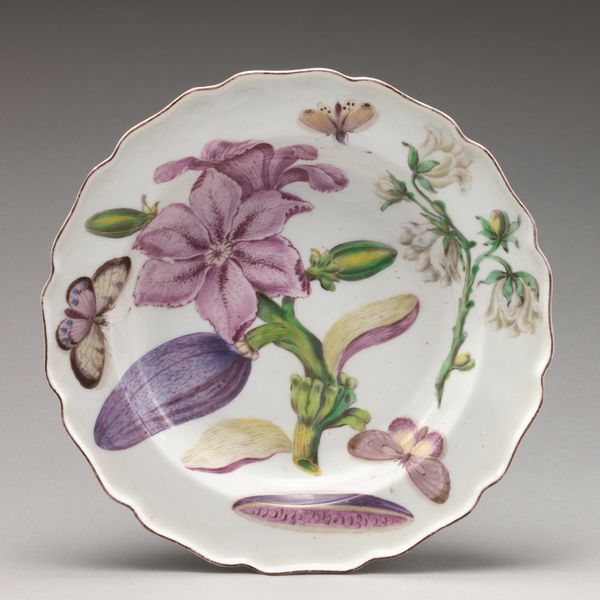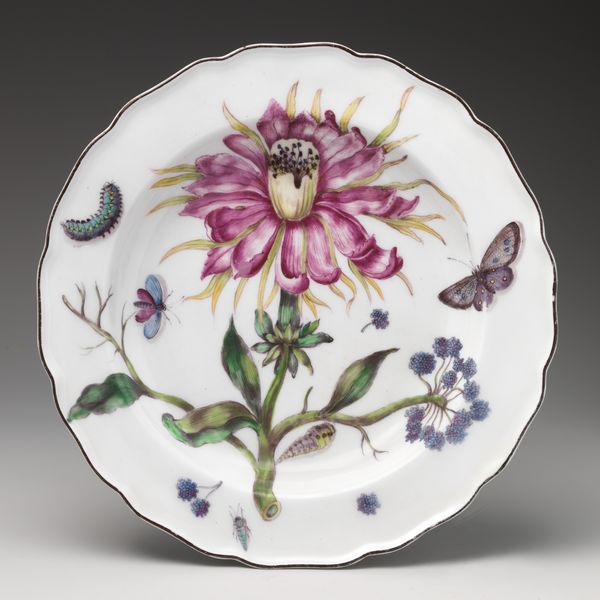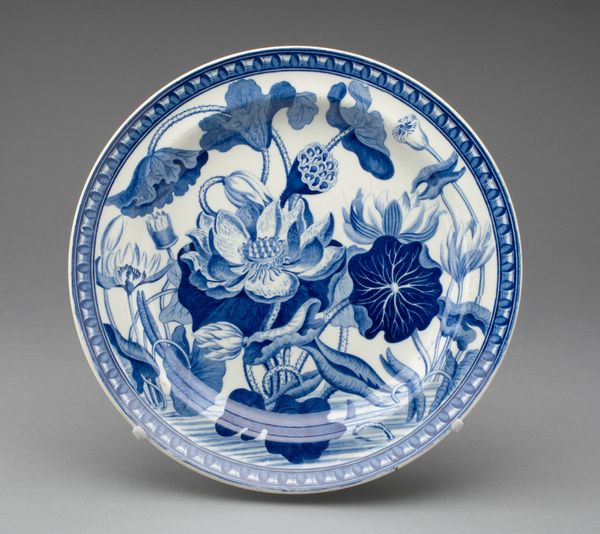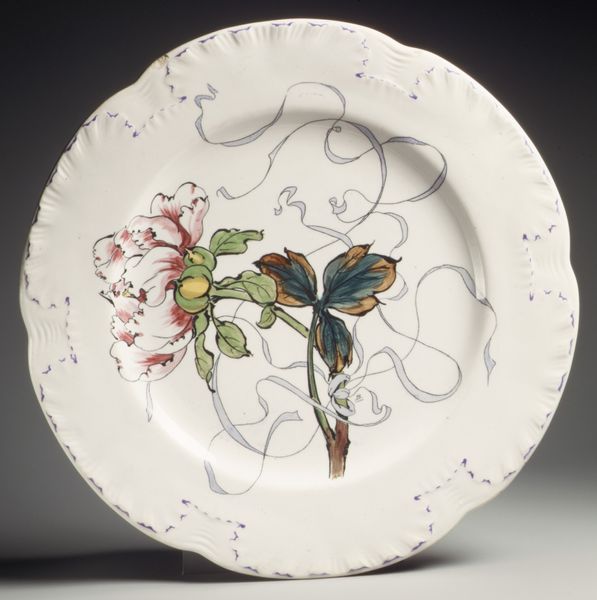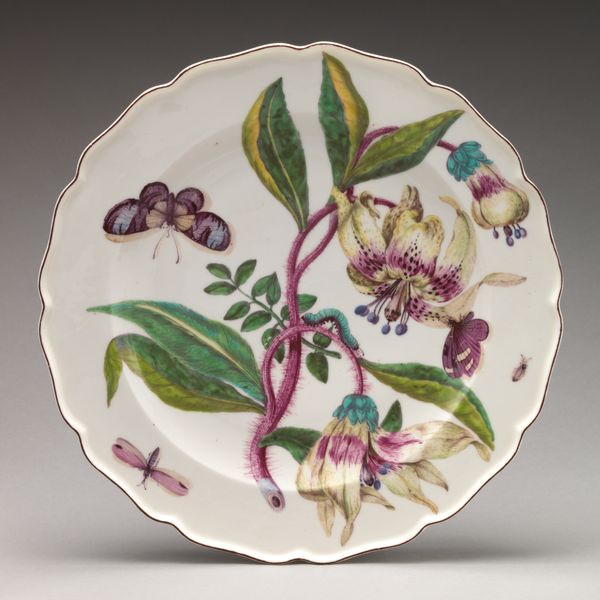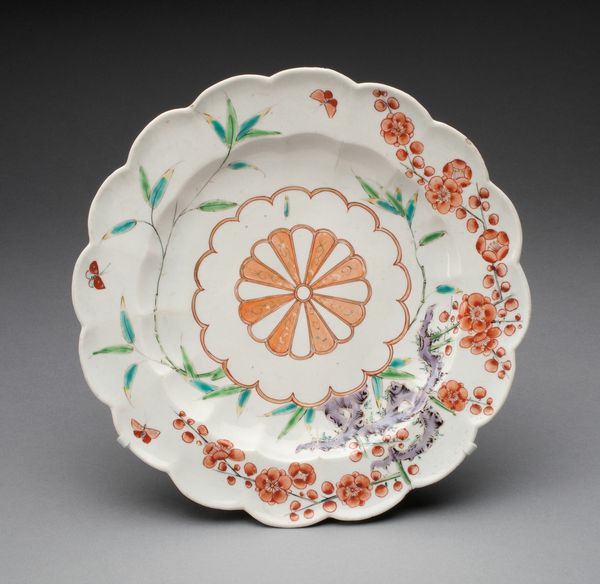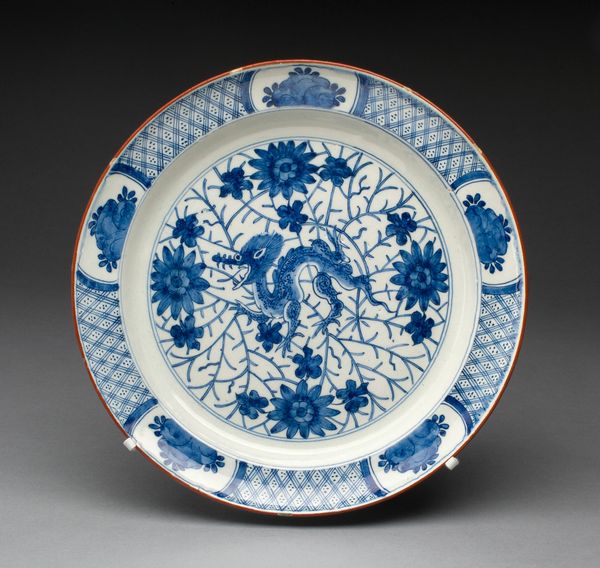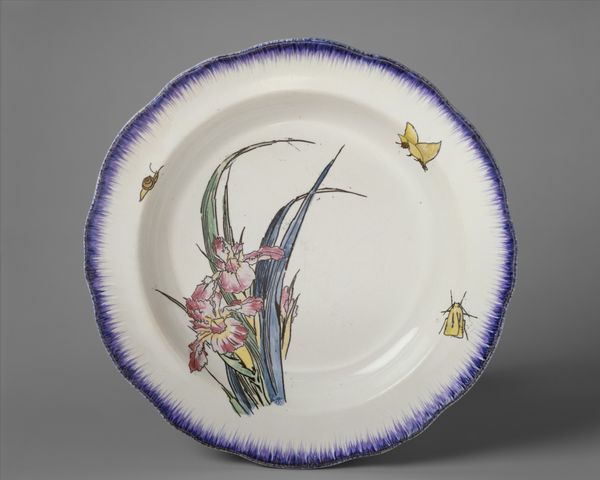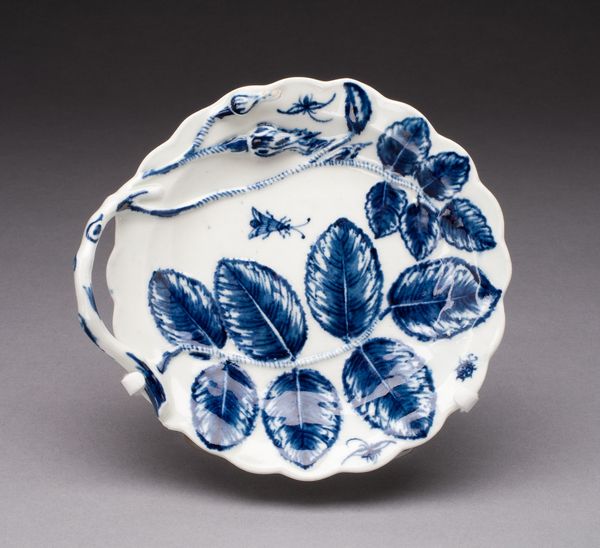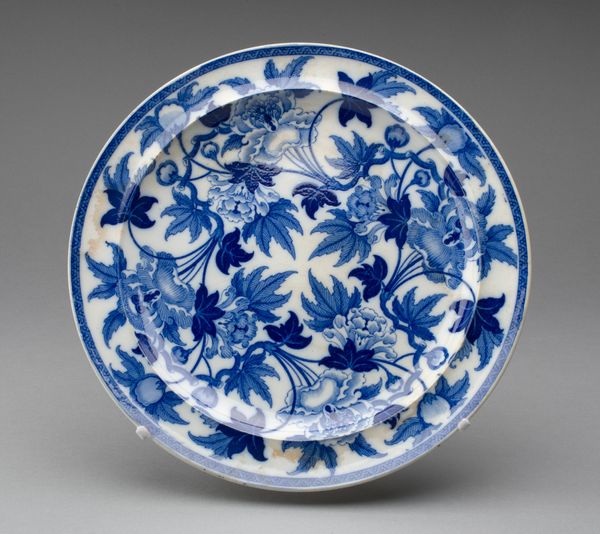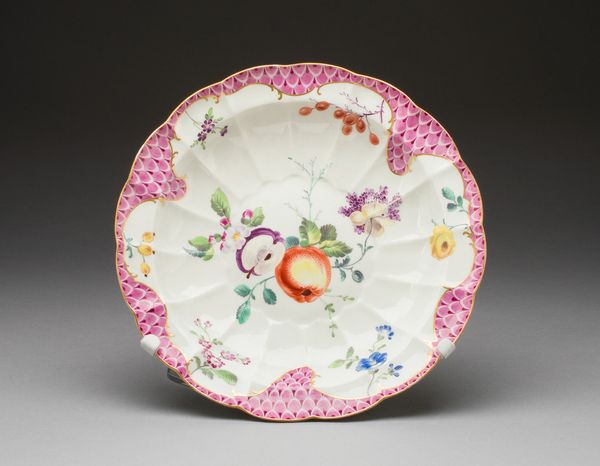
ceramic
#
ceramic
#
flower
#
stoneware
#
england
#
ceramic
#
decorative-art
Dimensions: Diam. 8 1/4 in. (21 cm)
Copyright: Public Domain
Editor: Here we have a ceramic plate by Barker and Till, made in England between 1827 and 1830. The central flower design, painted in maroon and green, feels so folksy. I am really curious about the intention of decorative art, especially one designed for everyday use, in England. How would you interpret this work through its cultural lens? Curator: It's tempting to view this piece as purely decorative, isn't it? But remember, objects like this plate offer a glimpse into the socio-economic realities of the time. Think about the rise of the middle class in England during the early 19th century, their aspirations for domesticity, and the availability of industrially produced goods like this. The transfer-printed design, made possible by industrialization, democratized access to decoration. Do you see how the style of the plate speaks of wider access to commodities than had previously existed? Editor: So the mass production of ceramics and access to visual arts served as a new expression for middle-class citizens? Curator: Precisely! Mass production enabled pieces to be created that reflect taste as a form of expression. What seems like a simple floral design reflects complex cultural shifts. Consider also the symbolism of the flower itself. What might a single flower represent? Editor: I hadn't thought about it that way. I was just captivated by the simplicity of the art. It's interesting to think how this plate might reflect ideas of accessibility and democratization in early 19th century England. Curator: Indeed. Sometimes the most seemingly mundane objects carry profound cultural meaning. Thank you, I really enjoy viewing this in the framework of rising social trends!
Comments
No comments
Be the first to comment and join the conversation on the ultimate creative platform.
